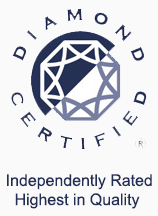
10 Things to Know Before Going Solar
There is always a lot to keep up on with solar electric power, but if you do your homework you will be able to figure out who is talking sense and who is giving you a snow job to make a sale. Here are 10 things to know before going solar, so you don’t get caught “flat footed”:
1. Make sure you understand your utility company’s rates.
In many areas, there are different “tiers” of usage and each has a different formula to calculate cost. Higher energy usage tiers have higher rates. In these schemes you pay more as your energy demands increase. In the San Francisco Bay Area, for instance, the typical monthly PG&E electric bill is around $90, but when your monthly bill exceeds $237 you are at “Tier 5” where you are paying higher rates. However, when you “go solar” with PG&E as your utility, it removes the top tiers from the cost formula. Therefore, the more you are spending on electricity currently, the higher the ROI (Return On Investment) you will enjoy on an installed solar system.
2. Solar Batteries, No Rebates
Don’t worry about batteries unless you are building a self-contained home or living compound. If you stay “on the grid” in a populated area, you will continue to get power at night from the local utility, just as you are doing today. Probably of more significance is the fact that most rebate incentives don’t trigger unless your system is tied to the grid.
3. Get an accurate idea of the amount of energy your home uses each month.
A growing family will face growing energy needs, but if you are childless or have college-age kids ready to leave the nest, you can expect your energy costs to go down, and stay down. Replacing LED bulbs and making other energy-saving changes and upgrades can lower your costs even further. Get a solar installer to calculate your planned electricity demands, not your actual, current usage.
4. South Facing Roof Area or Bust? No.
Ideally, of course, solar systems should be on the southwest-facing area of your roof. Truth be told, the direction your panels face is not as important as you may think (or salesmen may insist). Positioning the panels to face west or south will work, and even southeast, east and north-northwest give acceptable results, too.
5. Will Solar Add to Property Tax
Adding a solar system will not cause a reassessment of your property. Reassessments are trigged by room additions or other construction that increases the square footage of the structure. In most states IF a property assessment is triggered, the addition of solar electric panels are exempt from property taxes.
6. Cover Your Solar Investment
After installation, contact your homeowner’s insurance company and have your policy amended. You will face an increase on your property insurance of probably less than $10 a month, but protecting your system from fires or other damage is critical.
7. Learn Your Solar Warranties
Learn about the two kinds of solar electric system warranties that are normally offered. The first one is the panel and inverter manufacturer warranty, which are usually 25 years on panels and up to 25 years on the inverters. The installers should also offer a warranty on the quality of their work, which means guaranteeing they made no holes in your roof likely to lead to leaks for a specified period, from two to 10 years, normally. Remember that neither of these warranties covers theft, fire, or other damage, so follow up on #6 above and get the system added on to your homeowner policy.
8. How Long Do Solar Panels Last
Generally speaking, a solar panel will last 30 years or more and lose some ½ percent (0.5%) conversion efficiency annually. Hosing the panels off a few times during the summer and keeping leaves off them in the fall is about the only maintenance required.
9. Will Panels Harm my Roof?
The panels will not harm your roof in any way when properly installed. Frankly, they protect the areas located directly beneath them from the ravages of weather, light, and heat. You may even find that the room(s) of your home directly beneath the panel installations will remain cooler in summer and warmer in winter, regardless of the other insulation. You can save heating and cooling costs when you install your panels wisely. Proper home preparation, and choosing the right installer will go a long way to ensuring a job done right.
10. Your Roof Type Can Impact Cost
The kind of roof you have makes a big difference in installation costs. It will definitely be costlier to install solar panels on Spanish tile or shake than on plain old asphalt shingle roofs. Both tile and shake are far more brittle than asphalt shingles, so additional time-intensive care is needed to ensure that any attachment points penetrating the roof are completely and properly sealed. This extra time can add 10% to 25% additional cost to the installation job.
Always talk to a few solar companies before you commit to a solar electric panel installation. You may find that pricing is similar, so you will have to base your final decision on other things, including reputation, the amount of help you get figuring out the government rebates, and so forth. If a salesman is honest and his company reputable, he will likely give you this last piece of advice, too. Conserve energy first then decide how to augment your home with solar power. Learning how to conserve is free, but you have to take the time to study up a bit. After you have conserved all the energy you can, you can take the next steps in determining how best to install a solar system. You will be starting from your “real” energy level (your “new, improved and reduced” one) and you can be certain of getting the right answers and making the right investments.



